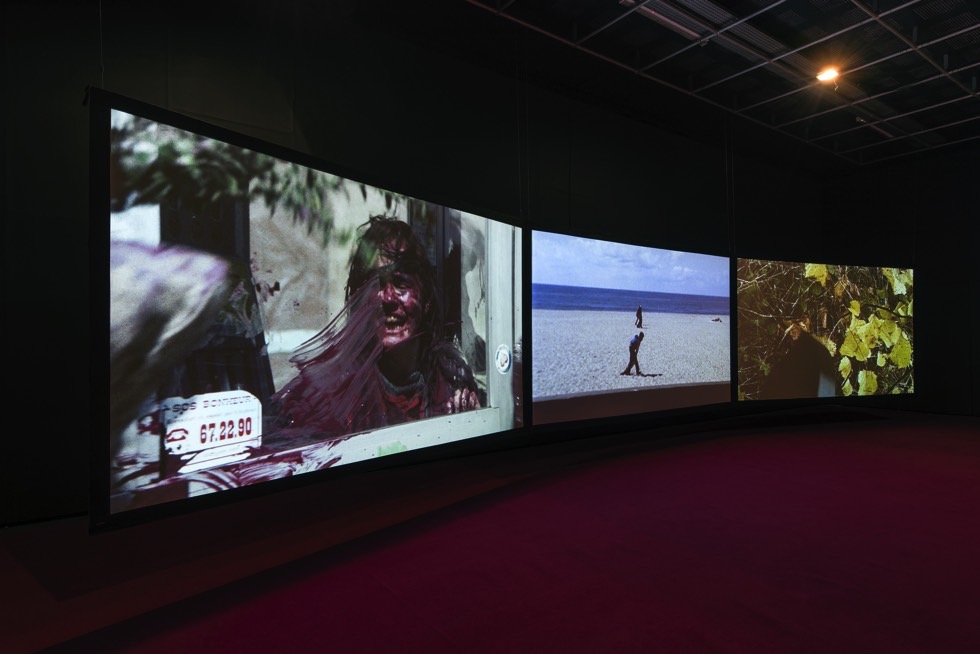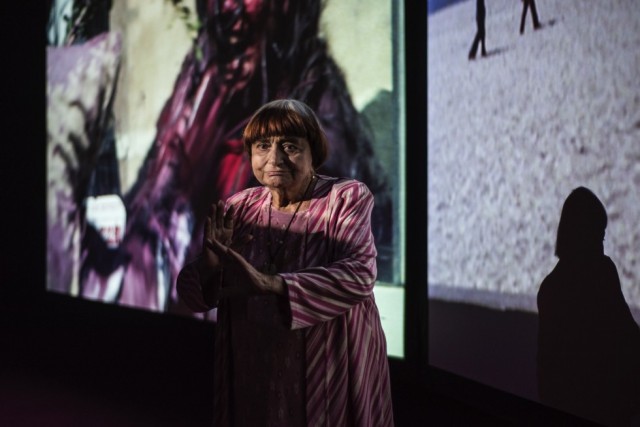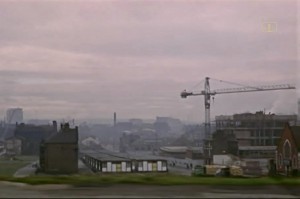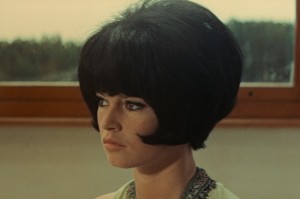The Big Interview: Agnès Varda // Liverpool Biennial 2018

As her new installation is revealed at FACT for Liverpool Biennial, we speak to pioneer of the French New Wave: award-winning filmmaker, photographer and artist, Agnès Varda…
On using triptychs in her work:
Triptychs are a beautiful way of telling; you’re invited to see different things. Proposing to the viewer the still image and the moving image: your mind is going one thing to another. To be morose or happy or connecting, but vaguely, vaguely it has to do something. It’s also the desire to reconcile black and white and colour, silver and video, photo and cinema – erasing all the borders and using all the techniques I’ve acquired.
On her first commission in the UK for Liverpool Biennial 2018 – a film installation entitled 3 moving images. 3 places. 3 rhythms. 3 feelings. 3 sounds:
This is a new experiment: three images, coming from three different ambience. You have the seaside, and people passing by to clean it; they cross and then they cross again. It’s a very quiet image. Then on the right, I was filming myself a film called The Gleaners and I [2000]; the shooting was finished, I walk fast, and I’d forgotten to close the camera. The lens cap was dancing; a curious image. The image on the left is an extract from Vagabond [1985]; in which Sandrine Bonnaire was playing Mona. She’s in a village where they have a very cruel game; men, monsters in furs, attack people in white. She screams and she escapes.
We put it in slow motion, to see the bizarre shapes. Questioning the silence and the noise. What is the relation, how do I feel? What is the sensation? What is proposed is to put you, the viewer, into a state of wondering what is happening.
On meaning in her work:
The meaning is always supposed to be clear. We don’t need meaning all the time. Some things are out of meaning. We are supposed to understand logical connection. This is proposed as impression, vague impression, maybe surprise, maybe slightly confusing – and that slightly confusing is like a weird dream. It’s a proposition of getting yourself and me engrossed in something which may have a connection in our minds.
On understanding:
I’m fascinated by wind turbines… [makes whooshing noise] …Non-stop. And that’s time. By passing by, again and again, that’s what time is about: again, and again, and again. I think many things in life I don’t understand. I’m not especially stupid, but there’s many things I don’t understand. I think we’re always not understanding. The cruelty of life… We’re surrounded by action and situation.

On art:
What does it mean, art? What is the desire to create something, that should look good according to the artist, to be shared with people to impress them, to touch them, to shock them? I really don’t know. I did cinema school, I didn’t do art school. But I loved art.
On the making of Ulysse (1982), also on show at FACT:
I wanted to help a child who was my neighbour, a Spanish political refugee. He had something in his bones, so the doctor said we should take him somewhere near the sea for two weeks, to take care of him. Then I saw a dead goat, fallen from the cliff – I was impressed. Right away it gave me the idea to make a film, a composition. The goat will be there, a man will be near the sea, looking at the sea, naked. When you learn painting, they call this ‘painting landscape with figures’; it gives you the proportion of nature. That child I placed in the middle: the man, the child and the goat. I had the feeling I was doing an ‘art photo’.
I had a print of it in one of the closets in my studio; and then the child made a painting of it when he was maybe six or seven. And I kept also that in my closet.
28 years later… suddenly, it questioned me. I had to do something about that image, questioning the photo. So, I started to make the film that you have seen. I found the naked man, and asked him if he agreed to be naked again. He didn’t remember [the photo]. Then I met the child, who had become a man with a wife and child. He didn’t remember, he didn’t want to remember. The mother was the only one who had a vivid memory, as she was worried that the child was very sick.
One image can be interpreted by different approach; history generally, private history, time, weather…. Little by little it built in me an understanding. If you don’t look at the image, then it is nothing. The looking at the image is very important. If it is in a drawer and one person looks, then it starts to be something. The whole thing became a bigger question of ‘what is an image?’

I love mythology. In my mind, Ulysses never wanted to go home. He wanted to be stopping at this island with beautiful women. It made me think of the man and the child.
So you can start with a little something and develop a mystery.
On cats:
I love cats. There is a legend that poets love cats. Right now, I have three: one, the lovely Mimi [who won the Palme de Whiskers award for her performance in Varda’s new film, Faces Places (2017)], and her son who is a big fellow, and another called Straw Pie. Some have been important in my life, some I have forgotten, but the house was always with cats. I never had a dog.
Sometimes they put their feet on the piano of the computer [keyboard], some are on the bed, some are shy… I love them so much, but we don’t know if they love us. When I come back from a trip, firstly they are mad at me: ‘You were away, so don’t expect me to be nice.’
Laura Robertson
See the Agnès Varda: Pioneer screenings, starting with her debut at FACT Liverpool, La Pointe Courte (1955), 6.30pm Wednesday 18 July 2018 — £12.20/11.20/10.20
Screenings continue until 10 October 2018
See Liverpool Biennial 2018: Agnès Varda, Mohamed Bourouissa & Morehshin Allahyari at FACT Liverpool until 28 October 2018 — FREE
Images, from top: Agnès Varda, 3 moving images. 3 places. 3 rhythms. 3 feelings. 3 sounds (2018), installation view at FACT, Liverpool Biennial 2018: Beautiful world, where are you? photo by Thierry Bal
Agnès Varda with 3 moving images. 3 places. 3 rhythms. 3 feelings. 3 sounds (2018), photo by Thierry Bal
Agnès Varda in conversation with Hans Ulrich Obrist at FACT Liverpool, Liverpool Biennial 2018, 13 July 2018, photo by Mark McNulty





